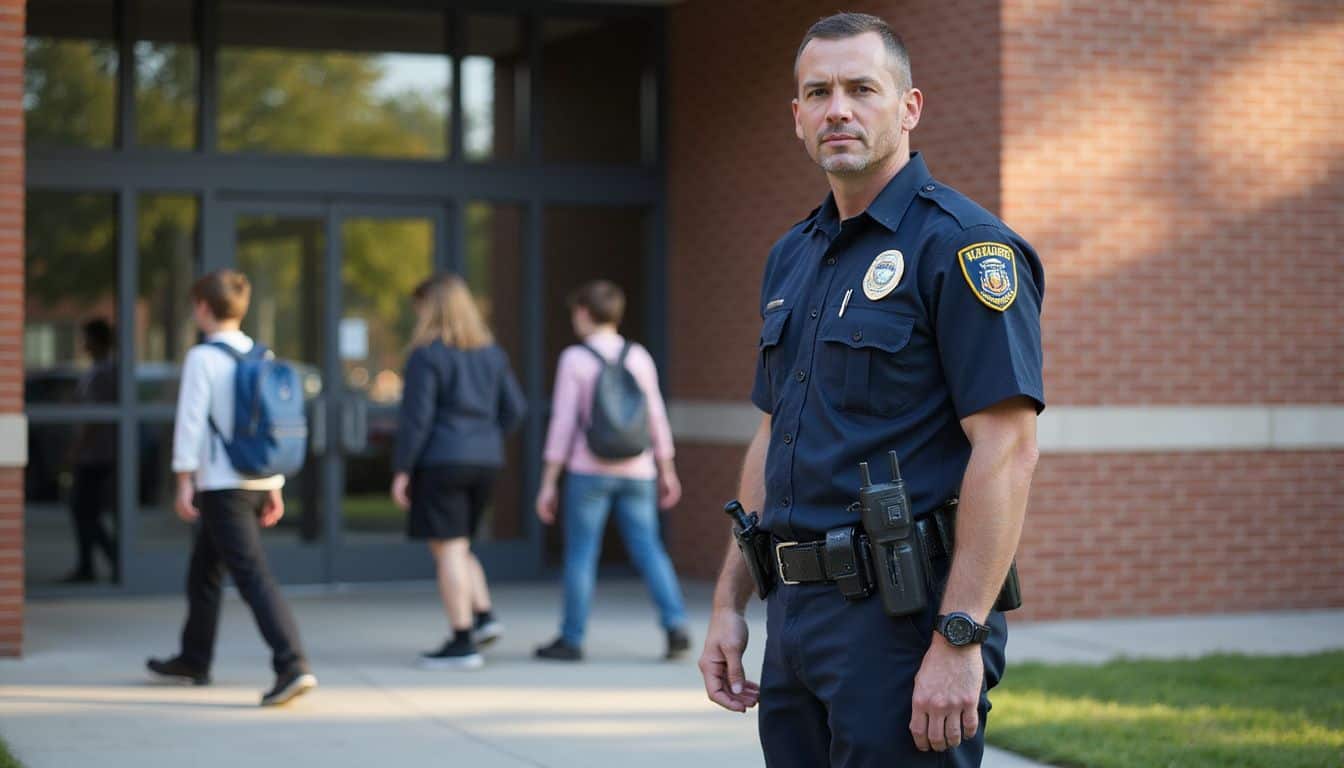Are you worried about violence or security breaches at your child’s school? Schools deal with around 10 crime incidents per 100 students each year. In this post, you’ll learn practical tips on how can schools improve safety and security to protect every student.
Keep reading for seven smart strategies to keep kids safe at school.
Key Takeaways
Each year, schools deal with roughly 10 crime incidents per 100 students—highlighting the clear need for solid security measures to protect kids.
Physical safety equipment is essential, with 91% of schools using surveillance cameras, 97% controlling door access, and many installing intrusion alarm systems to help safeguard school grounds.
Regular safety drills prepare students to act calmly if emergencies occur—in fact, 98% of U.S. schools held lockdown drills during the 2019-2020 school year.
School Resource Officers offer important protection, and their presence has increased steadily: from 42.8% of schools in 2009 to 65% in 2020.
Modern safety technology—including smartphone apps, anonymous tip lines (now in place at 66% of schools), and upgraded surveillance features—helps schools identify potential threats early and swiftly act on them.
Table of Contents
Strengthen Physical Security Measures
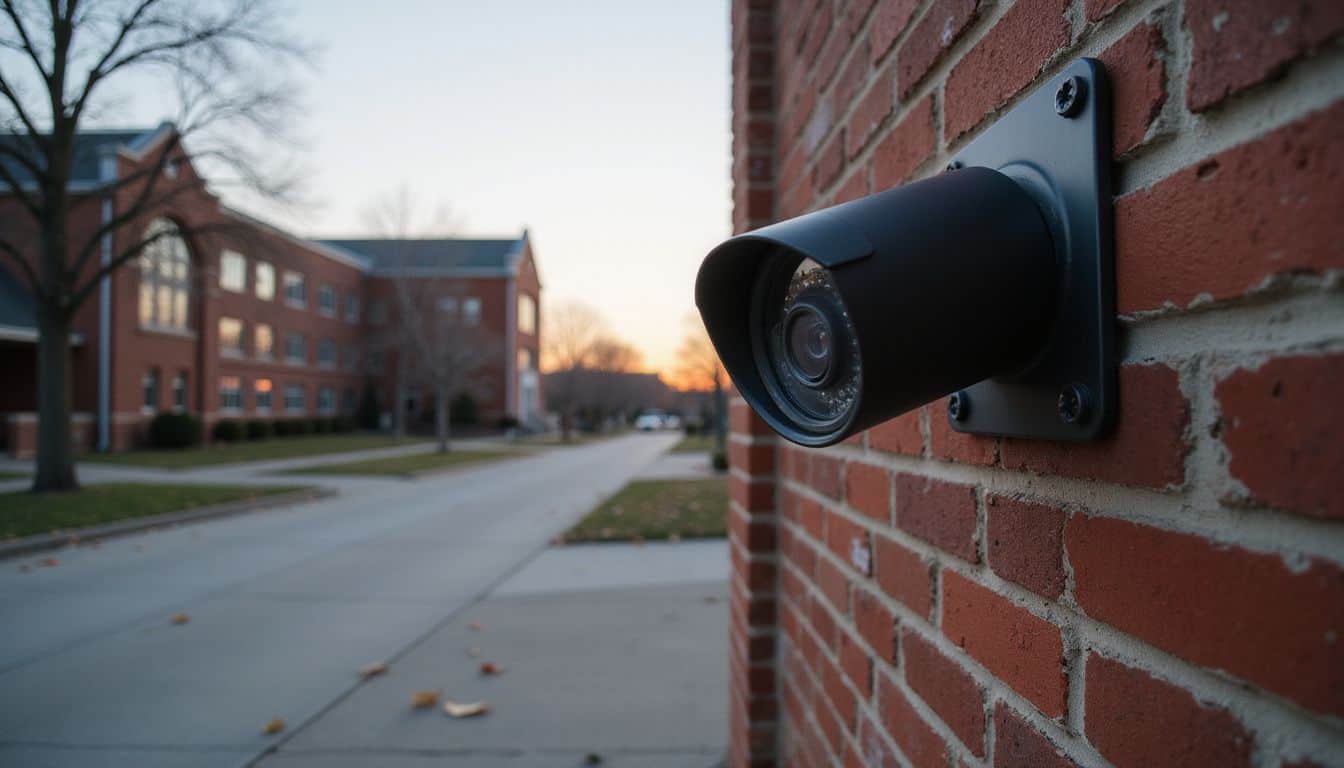
Schools must create strong barriers against unwanted visitors through smart security upgrades. Modern safety tools like cameras, door locks, and alarm systems form the first line of defense against possible threats.
Install video surveillance cameras

Video surveillance cameras play a vital role in keeping schools safe. Across America, 91% of schools used security cameras in the 2019-20 academic year, highlighting their wide acceptance.
These cameras go beyond simply recording footage—they actively discourage theft, vandalism, and other campus crimes. Today’s advanced camera systems even use AI technology to identify suspicious activity, immediately alerting school staff.
This quick notice allows staff enough time to step in before issues escalate.
Placing cameras strategically in entrances, hallways, and gathering spots helps students and teachers feel safer. Visible cameras discourage potential wrongdoers from acting out. To boost campus safety, schools should combine video surveillance with other protective measures, such as weapons detection systems for schools and controlled access points.
By using multiple approaches at once, schools can steadily lower crime incidents below the nationwide average of 10 crimes per 100 students.
Use door access control systems

Safe schools aren’t just about cameras—they also rely heavily on strong security at doors and entryways. A reliable access control system is critical for keeping strangers out during the school day.
In fact, 97% of schools already use some form of controlled-entry measures. Advanced devices, like key cards or fingerprint scanners, track exactly who comes in or leaves. This lets schools easily keep tabs on everyone inside.
In the past several years, access control technology has made huge strides. Modern systems connect directly to mobile phones, allowing immediate monitoring. Staff can instantly lock down doors if there’s an emergency.
They can even view entry records from anywhere, at any time. Fast access to this kind of data can help schools respond quickly and protect kids from danger. Many places combine these systems with intrusion alarms, creating complete security coverage.
The best access control systems don’t just keep threats out—they give school communities peace of mind so learning can flourish.
Implement intrusion alarms
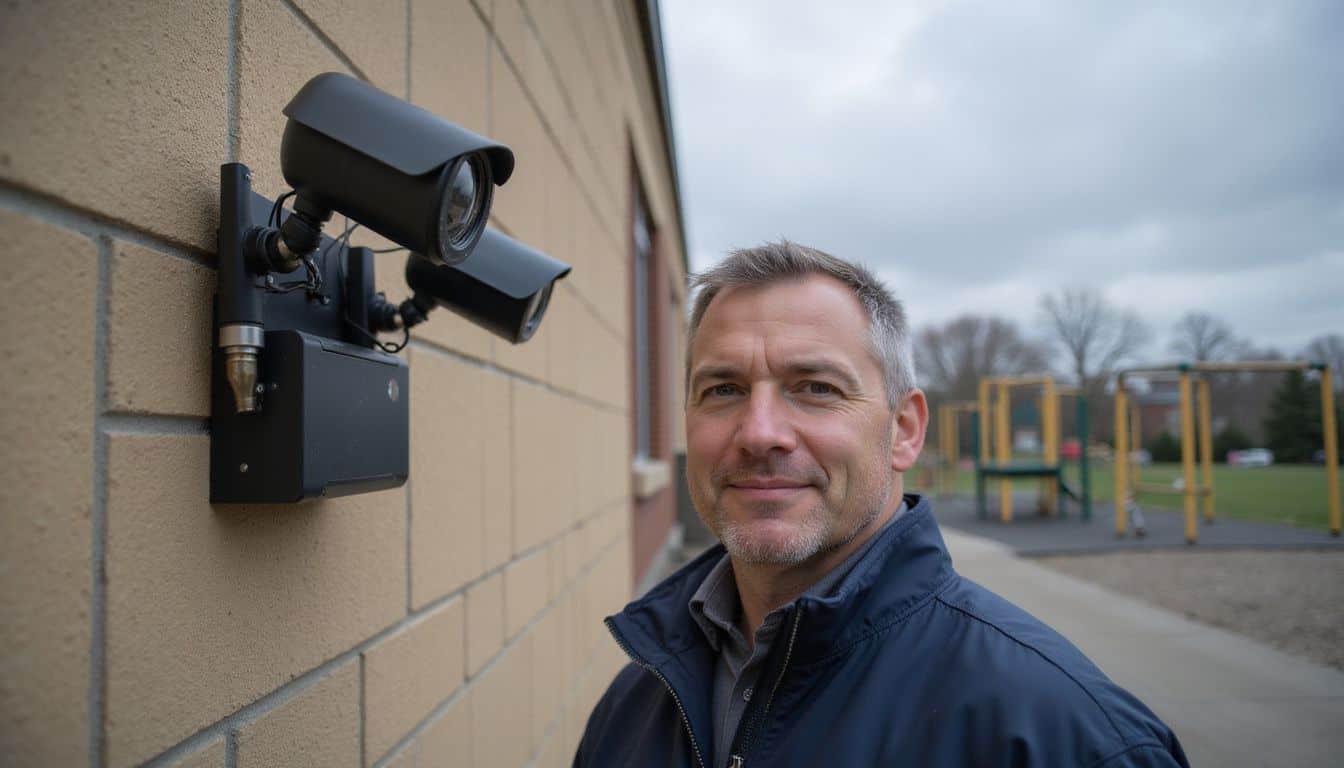
Intrusion alarms quietly guard your child’s school building, watching closely for any uninvited guests. These systems quickly sense unauthorized access, alerting school staff right away—even during nights and weekends.
Today, many schools pair alarms with video cameras, creating stronger layers of protection. With cameras added, staff can spot possible threats earlier and respond faster, keeping students protected.
Modern alarms also directly connect to emergency alert networks within the school. If a break-in occurs, the alarm immediately triggers lockdown measures or sends instant messages to school workers and local police.
For moms worried about school safety, it’s comforting to know these alarms operate day and night, providing real reassurance about your child’s safety during class hours.
Enhance Emergency Preparedness

Schools must practice their emergency plans until they become second nature for all staff and students. Regular drills teach everyone how to react quickly during a crisis and save lives when seconds matter.
Conduct regular lockdown and safety drills

Safety drills prepare kids to handle school emergencies calmly, potentially saving lives—it’s that simple. A full 98% of American schools held lockdown drills during the 2019-2020 school year, highlighting just how essential these activities have become.
- Today’s schools run various safety exercises—lockdown, natural disaster, shelter-in-place and active threat drills—to ready students for different emergencies.
- Regular practice teaches students escape routes, helping them respond calmly instead of panicking if an actual crisis happens.
- Moms can check with teachers about scheduled drills, making the conversation at home smoother and reinforcing safety awareness.
- Lockdown drills show kids how to stay quiet, remain hidden, and carefully follow their teachers’ directions.
- Routine drills become second nature; students act automatically during real emergencies instead of freezing up.
- Most schools hold drills every month, giving students frequent chances to understand and master the safety steps.
- Safety exercises improve how effectively staff members communicate during crisis events.
- Teachers explain drills clearly, using kid-friendly language, so younger students won’t become frightened.
- Parents can strengthen the importance of school safety by establishing similar emergency routines at home.
- School resource officers often join drills, helping students feel comfortable interacting with people who respond during emergencies.
- Drills reveal gaps in school safety practices, making it easier to fix these weak points promptly.
- Safety practices now include reunification steps—so parents clearly know where to meet their children if a real emergency occurs.
Develop and practice crisis response plans
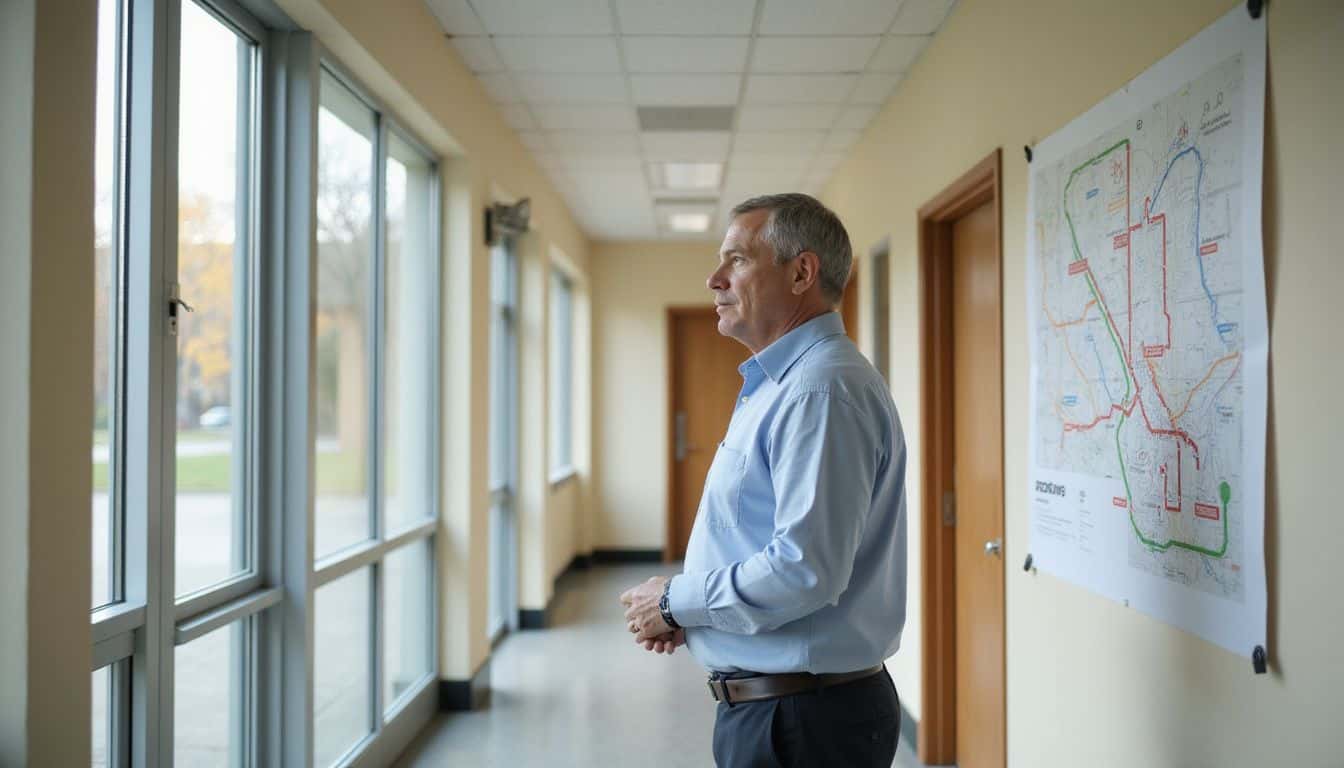
Regular lockdown drills train students and staff in quick responses—but schools also need thorough, detailed crisis plans to handle various emergencies. Strong, well-organized crisis plans help save lives, calm nerves, and reduce confusion during critical moments.
- Write clear plans for specific emergency situations, like active shooters, natural disasters, and medical emergencies. Staff must know exactly how to respond when every second matters.
- Build a dedicated crisis response team made up of staff, teachers, counselors, administrators, and maintenance personnel. Each team member has a clear, defined responsibility to manage different safety needs effectively.
- Coordinate closely with local police, fire departments, and EMT services to review and improve emergency plans. Local first responders supply valuable information and tips to strengthen your school’s emergency preparedness.
- Create detailed evacuation route maps, clearly marking primary and alternate exits through the entire school building. Include extra planning for students who have disabilities, so no child misses out on safety in an emergency.
- Decide on safe, designated reunion locations for parents to find their kids afterward. Keep emergency communication systems reliable—even during power outages or overloaded cell networks.
- Keep emergency supplies ready, organized, and easy to reach around your school campus. Stock first-aid supplies, communication tools, and other needed emergency equipment in multiple accessible locations.
- Collect updated contact numbers and addresses each semester for parents, students, and staff. Quick responses depend fully on having correct, fresh contact information ready immediately.
- Hold realistic full-scale drills that mirror actual emergency conditions throughout each school year. The National Association of School Psychologists recommends performing these drills regularly during each academic term.
- Evaluate and update your emergency plans after every drill or real-life event. For instance, after the tragic Uvalde shooting, many schools learned their plans had gaps that regular reviews could have uncovered and addressed earlier.
- Offer trauma-informed training for all staff, preparing them to assist students emotionally during or after any crisis event. Caring for student mental health plays a central role in strong emergency preparations.
If you’d like flexible options for adult education while still managing these important safety protocols, check out going back to school as an adult for opportunities that fit into your busy routine.
Install emergency responder communication systems (ERCES)
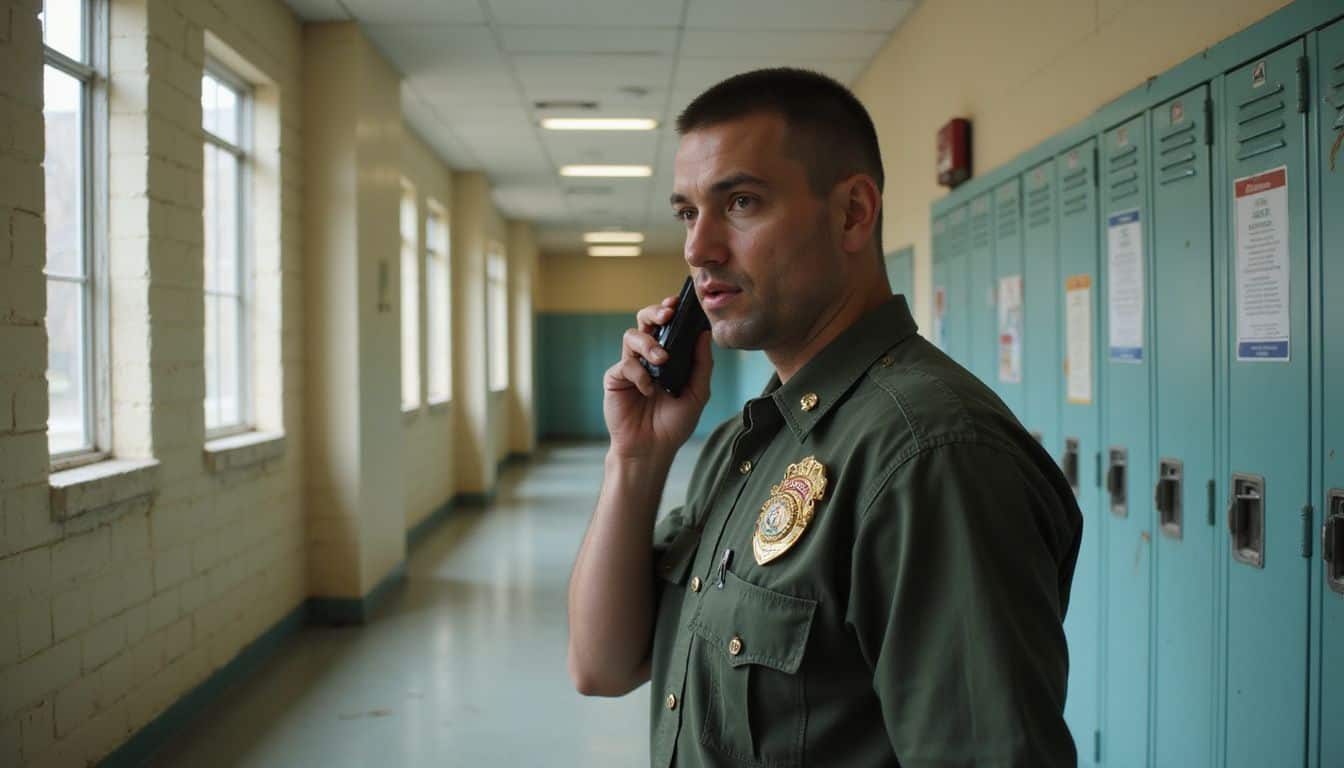
After putting together reliable crisis plans, schools have another vital safety area to address. Clear communication can save lives in an emergency. Emergency Responder Communication Systems (ERCES) solve a key safety issue—improving radio signals inside school buildings.
Often, school layouts and building materials block radio frequencies, making it hard for first responders to stay connected during critical moments.
A complete ERCES solution uses Bi-Directional Amplifiers, antennas placed carefully around the building, and strong coaxial cables. Together, these parts deliver reliable radio coverage in every hallway, classroom, office, and gym.
Every year, technicians must check and service the ERCES equipment to keep it running well.
For parents who worry about their kids’ safety at school, ERCES adds peace of mind. Knowing a school has installed ERCES means emergency workers can clearly communicate, respond faster, and coordinate their actions effectively during incidents—like medical crises or security situations.
Promote a Positive School Environment
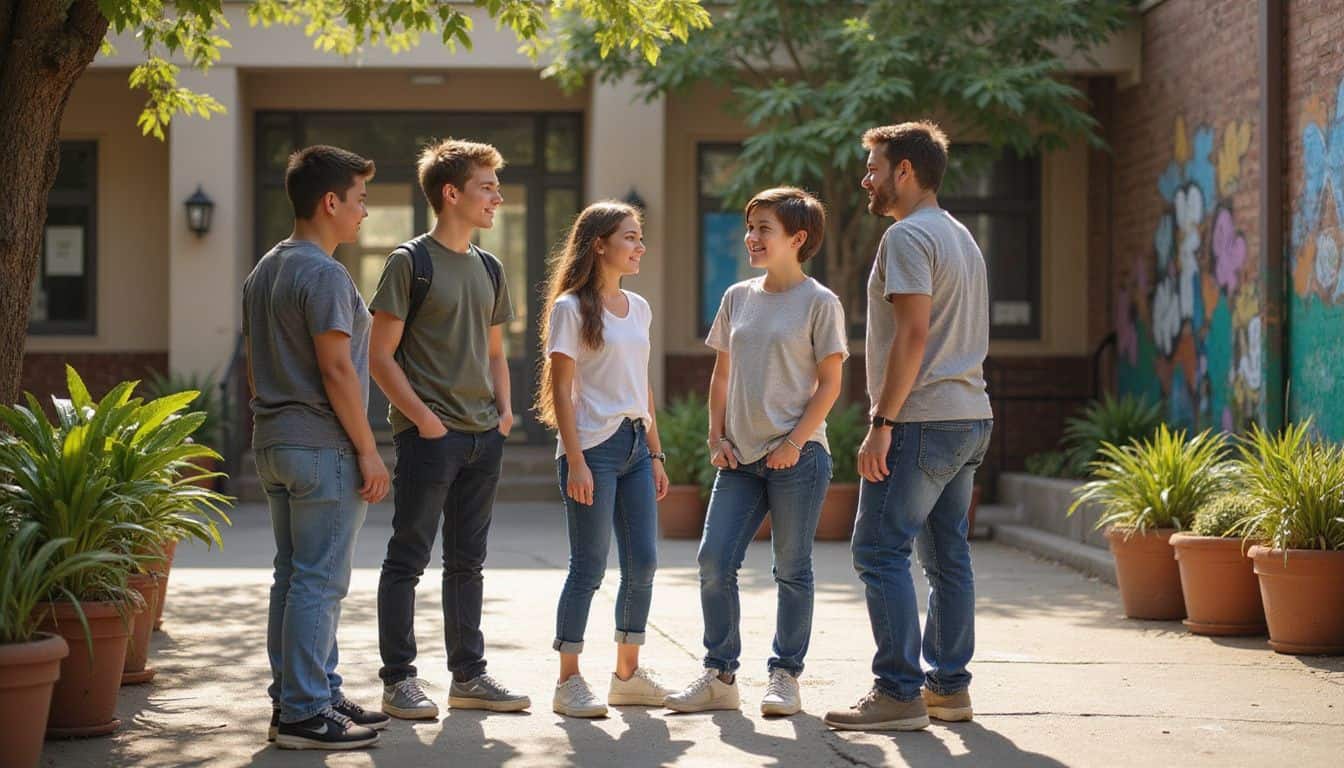
Building a positive school climate helps cut down on fights and makes students feel safe to speak up when they see trouble — read on to learn how schools can create spaces where kids feel valued and protected.
Address bullying with clear policies
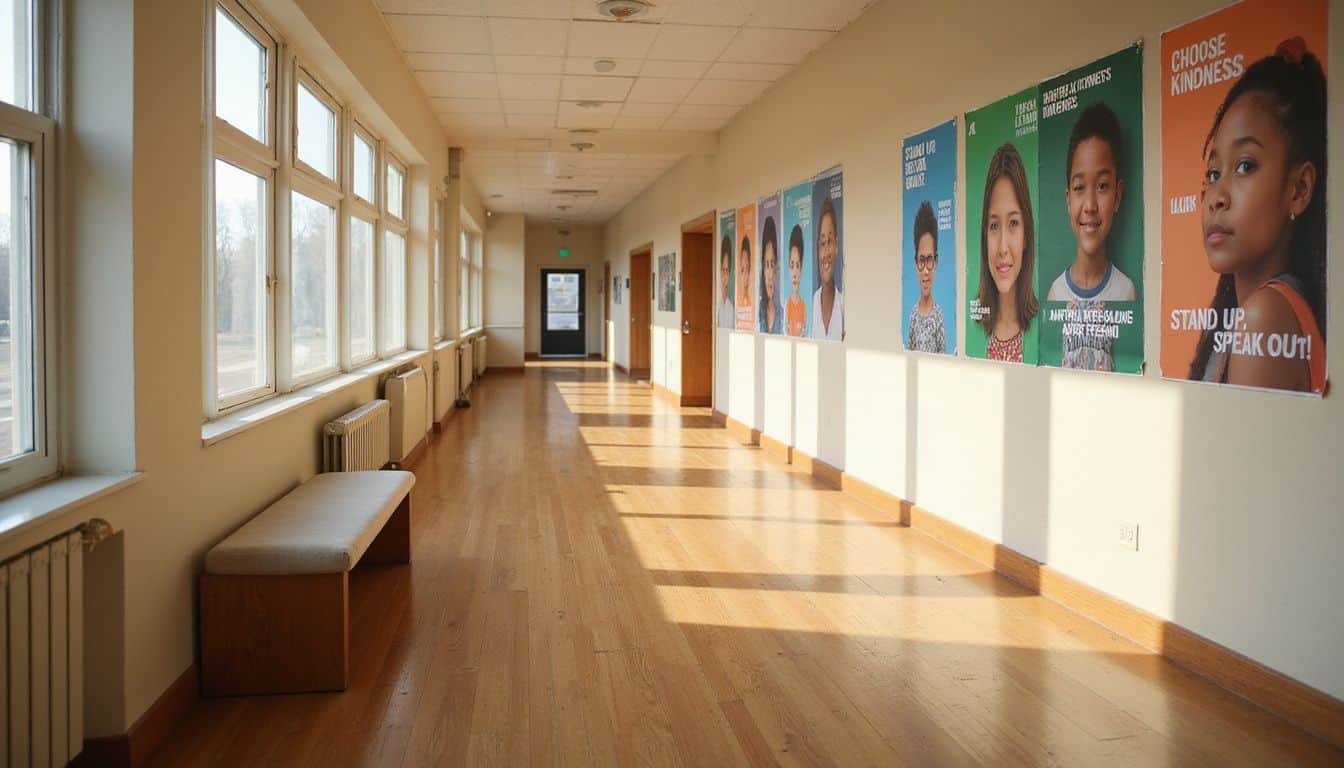
Schools should have clear anti-bullying policies that explain what bullying is and its consequences. I’ve seen bullying seriously harm a student’s mental health, self-esteem, and academic performance.
Effective policies include teacher training and simple methods for students to report incidents. Strong rules must consistently protect every student—particularly kids from the LGBTQ community who often face extra harassment.
Simply creating policies isn’t enough; schools need to enforce them every single time.
Effective anti-bullying policies help create a supportive school environment where each student feels safe and valued. The best rules clearly define bullying behaviors and provide detailed guidelines on handling incidents promptly.
Many schools now offer anonymous reporting tools, letting students comfortably speak up without worrying about backlash. Regular training helps teachers recognize early signs of mental health struggles, helping prevent bullying or potential violence.
Positive connections between students and teachers also promote safety and trust within schools.
Foster positive student-teacher relationships

Teachers who form close bonds with students help make schools safer places. Kids perform better academically if they sense their teacher truly values them. Studies prove strong relationships improve social skills and raise overall grades.
Even small gestures—like greeting students warmly each morning—can change how kids feel about school. Since every child is different, teachers must adapt their approach to fit each student’s unique needs.
By getting to know students on a personal level, teachers notice early signs of mental health struggles. Students who trust their teachers often reveal bullying or violence concerns, addressing issues before they escalate.
Genuine connections between students and teachers build a solid foundation for emotional wellness, reducing conflicts in classrooms and hallways. Staff training should cover methods to bond effectively with diverse student groups, such as kids from low-income homes or those with disabilities.
Next, we’ll look at ways schools can help students comfortably report concerns without giving their names.
Encourage students to report concerns anonymously
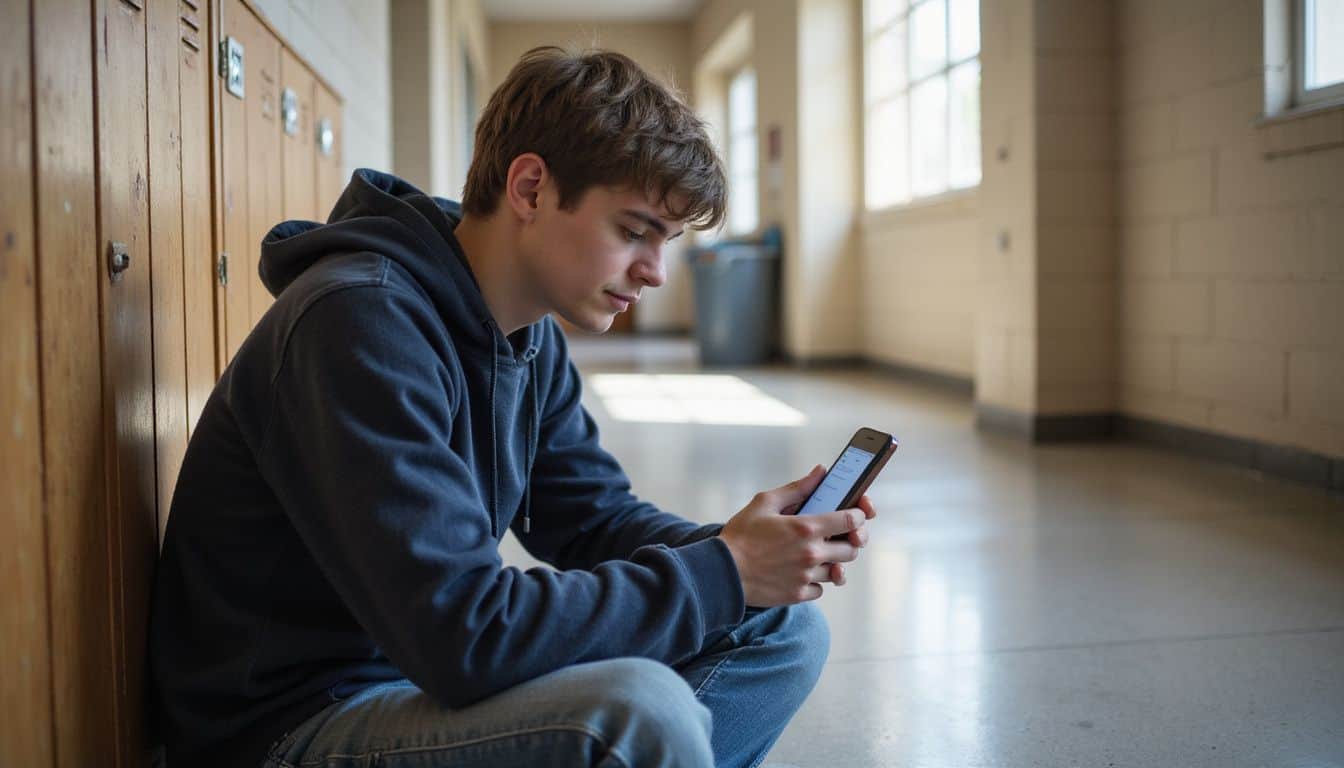
Students often keep quiet about safety threats, worried they’ll be labeled as a “snitch”. To fix this issue, schools need secure and private ways for kids to speak out. In the 2019-20 school year, about 66% of schools offered anonymous reporting systems, helping more students feel comfortable talking about their concerns.
In Michigan, the state created “OK2SAY”, an anonymous program that lets kids privately report bullying, threats, and mental health problems.
Close relationships between staff and students boost school safety in a big way. If kids trust their teachers, they’re more likely to share issues or dangerous incidents openly. Schools can easily create private reporting methods like digital tip lines, secure drop boxes, or text messaging services.
These simple solutions protect student identities and help them speak up safely. Such tools empower students to prevent violence and give important support to peers facing mental health struggles.
Invest in Security Personnel and Training

Schools need trained staff who can act fast during safety threats. Smart training programs teach staff to spot warning signs and respond to emergencies with clear steps.
Hire school resource officers
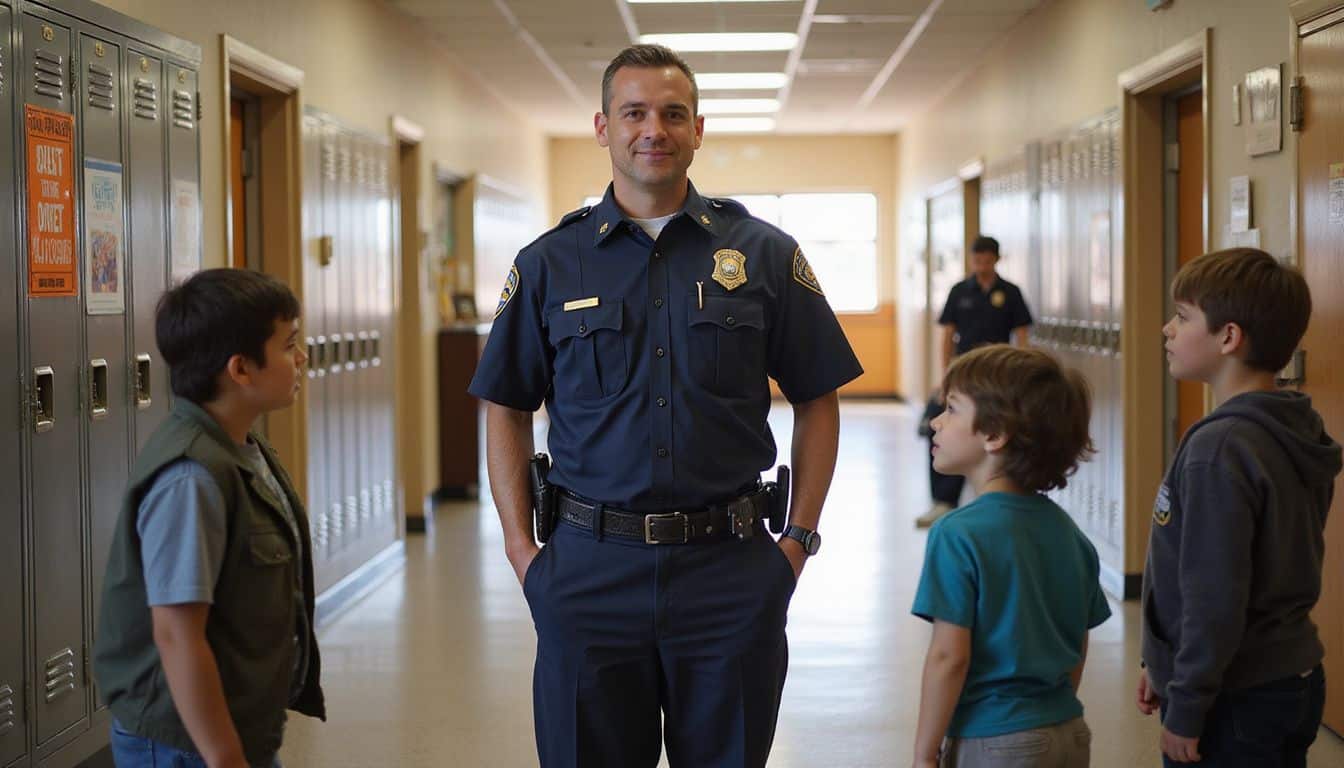
School resource officers (SROs) have a critical job—keeping students safe every day. Between 2009 and 2020, the percentage of U.S. public schools with SROs rose sharply, from 42.8% to 65%.
But these officers do far more than patrol the halls. They build connections with students, spot potential dangers early, and respond swiftly during crises. Most carry firearms; in fact, among schools employing security staff, 51% have at least one armed law enforcement officer on duty.
The money to hire these officers mainly comes from local school districts, covering almost 79% of expenses. Federal grants contribute only about 4%. Nearly 25,000 SROs served in approximately 5,500 law enforcement agencies nationwide as of 2019.
Officers receive specialized training for working with young people, addressing school issues like bullying, mental health struggles, and preventing violence. For many parents, having a properly trained officer nearby offers peace of mind about their child’s safety throughout the school day.
Provide regular safety training for staff
 Staff safety training is essential for a strong school security plan, preparing teachers and staff to manage issues quickly, clearly, and safely.
Staff safety training is essential for a strong school security plan, preparing teachers and staff to manage issues quickly, clearly, and safely.
- Crisis response training prepares staff to act quickly in situations like lockdowns and evacuations, giving them confidence to keep students safe.
- First aid certification provides skills staff need to care for injured students until professional help arrives, including stopping bleeding and performing CPR—critical skills that can save lives.
- Threat assessment training helps staff recognize early warnings of possible violence by noticing unusual shifts in student behavior or attitude.
- Bullying prevention training gives staff practical strategies to stop bullying early, before problems grow; nearly 85% of U.S. school districts already offer this type of training to educators.
- Mental health awareness training shows staff how to spot students struggling emotionally or mentally, helping to connect these students quickly with supportive resources.
- Regular emergency drills build reliable habits, helping staff instinctively follow lockdown and evacuation instructions during stressful moments.
- Communication system training ensures every staff member clearly understands alarm systems and alert procedures, teaching them how to effectively notify others in the middle of an emergency.
- De-escalation skills teach staff how to calm angry or upset students, safely and calmly preventing conflict from becoming violent.
Train staff and students to identify potential threats

Regular safety training forms the basis for security, but empowering everyone to notice potential threats takes protection even further. Schools need their communities able to spot trouble early and report issues before they escalate into violence. Try these practical tips to build a safer school community:
- Clearly explain behaviors that should prompt reporting—like sudden mood shifts, social withdrawal, or growing aggression.
- Guide students to recognize potential issues among peers without causing distrust or fear between friends.
- Many people involved in school violence showed troubling behavior beforehand, making early detection key to prevention.
- Set up anonymous tip systems, so kids can comfortably report concerns without worrying about the stigma of being a snitch.
- Make sure staff know to watch for concerning signs in students’ art or writings—these can signal mental health struggles or possible violent intentions.
- Hold regular workshops led by mental health experts; they can explain how certain behaviors link directly with potential danger.
- Regularly emphasize that reporting suspicious behaviors is about finding help early, not getting classmates into trouble.
- Share specific examples from past incidents; these real-life cases illustrate how early action could have altered outcomes.
- Data reveals that 64% of schools, primarily in urban and suburban districts, currently have trained threat assessment teams.
- Foster an environment where social workers, counselors, and teachers openly collaborate to support struggling students.
- Include role-playing exercises during staff training days to sharpen abilities in spotting issues early.
- Teach clearly how normal adolescent behavior differs from genuine warning signs pointing to violence.
- Link threat detection skills directly into broader violence prevention programs across the entire school community.
Leverage Technology for Safety
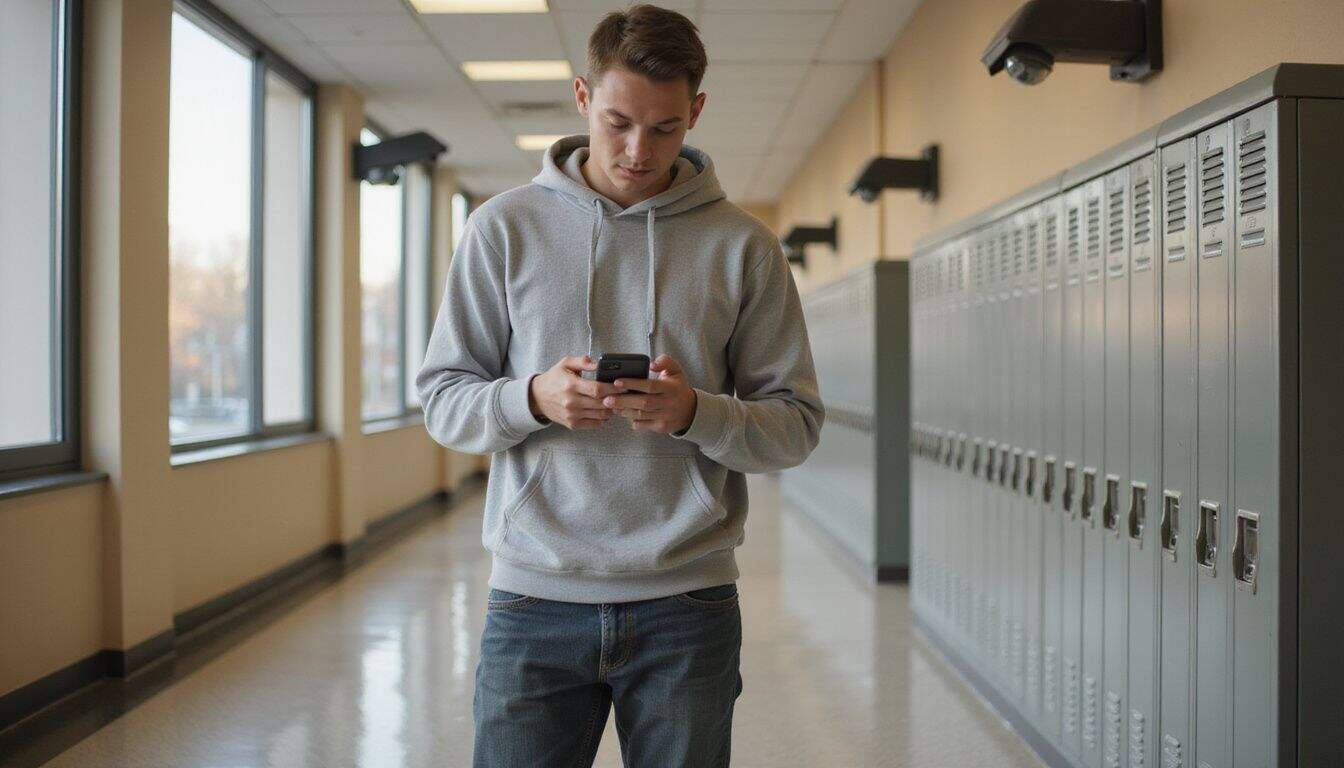
Technology now plays a key role in keeping schools safe from threats. Modern tools like mobile safety apps and smart cameras help schools spot problems before they turn into crises.
Use smartphone safety apps and alert systems
Today’s safety apps transform regular phones into powerful security tools for schools. These advanced tools instantly alert staff to emergencies, allowing quick action to protect students.
Many campuses now rely on systems that use geofencing—sending alerts directly to people in specific locations. Geofencing becomes especially critical if a threat only impacts certain campus areas.
Students gain protection, too, through anti-bullying apps. These apps allow kids to anonymously report bullying or threats without worry, giving them a safe channel to speak out. Mobile guides also offer easy-to-follow steps for crisis situations right at users’ fingertips.
Parents value these digital options, appreciating the comfort they bring regarding their children’s safety at school.
Monitor perimeters with advanced surveillance tools
School safety goes beyond monitoring apps—it includes securing school boundaries too. Advanced perimeter-monitoring devices form a protective safety shield around campuses. Smart camera setups now let staff quickly scan entire school properties during emergencies.
These tools help spot issues early, before they become serious.
Video surveillance supports multiple safety objectives inside schools. It helps staff assess potential risks and reduces bullying incidents on playgrounds and in hallways. Many parents say they feel calmer knowing cameras guard entrances throughout the school day.
Recorded footage helps resolve student arguments by clearly showing what took place. Verkada, for example, offers free camera-system trials for schools interested in improved security.
Such devices cover blind spots, places where problems often begin unseen. For many moms worried about their kids’ safety at school, these cameras deliver comfort and reassurance while learning continues inside.
Engage the School Community

School safety works best when everyone joins in. Parents, teachers, and local groups must team up to create a safe place where kids can learn and grow.
Involve parents in safety procedures
Parents are key to making schools safer and supporting children’s academic growth. Here are several simple yet effective ways parents can get involved:
- Organize monthly safety workshops at school, giving parents updates on current security plans and a chance to voice their thoughts. This fosters trust, keeps everyone informed, and ensures readiness for emergencies.
- Form a parent safety team that regularly meets with school leaders to assess and improve existing security steps. This group can spot safety gaps that staff might overlook.
- Provide clear, easy-to-follow safety guides for families to use at home during different emergencies. Simple instructions help parents and children practice and become comfortable with crisis steps.
- Set up a text-based alert system to keep parents informed right away, particularly during drills or urgent situations. Timely messaging eases fears and lets parents react calmly.
- Encourage parents to volunteer as safety monitors at student arrival and dismissal. Extra eyes during these busy moments can greatly improve safety.
- Offer basic first-aid and emergency training to parent volunteers. These parents become helpful resources during events or class outings.
- Conduct regular surveys to hear parent views and safety concerns. Their feedback can highlight unnoticed problems.
- Invite parents to join yearly reviews of the school’s safety plan, making sure family priorities and everyday needs are included. Their advice helps keep safety plans practical and relevant.
Organize community workshops on safety awareness
Community workshops offer a casual and practical way for parents and schools to team up on student safety. They provide a relaxed, welcoming atmosphere, giving moms—and dads too—chances to learn important safety tips and swap helpful advice about protecting kids at school.
- Hold monthly safety meetings so parents can openly talk with school leaders about their worries over shootings or violence.
- Provide simple, practical training in basic first aid, including how to use emergency kits in a crisis.
- Bring in local police officers to show parents ways to spot early signs of danger and how to report concerns effectively.
- Organize parent-run groups to openly discuss bullying and ways to support children’s mental health.
- Offer tech-focused sessions for parents, teaching easy tips to keep track of their kids’ online behavior and spot internet dangers.
- Provide relaxed training for parents to better understand and support children from different cultures, especially those under pressure from stereotypes like the “model minority”.
- Schedule routine safety tours with parents and school staff around campus to spot weak points in security.
- Create dedicated workshops to show how students with disabilities can be helped during emergencies.
- Start parents-only safety teams that regularly test and improve how quickly schools alert families in emergencies.
- Give clear, step-by-step demonstrations on how school security devices—like panic buttons and intrusion alarms—protect students.
Next, we’ll look ahead at how safety practices in schools might evolve by 2025, with fresh ideas and new tech on the way.
How Will School Safety Measures Evolve in 2025?
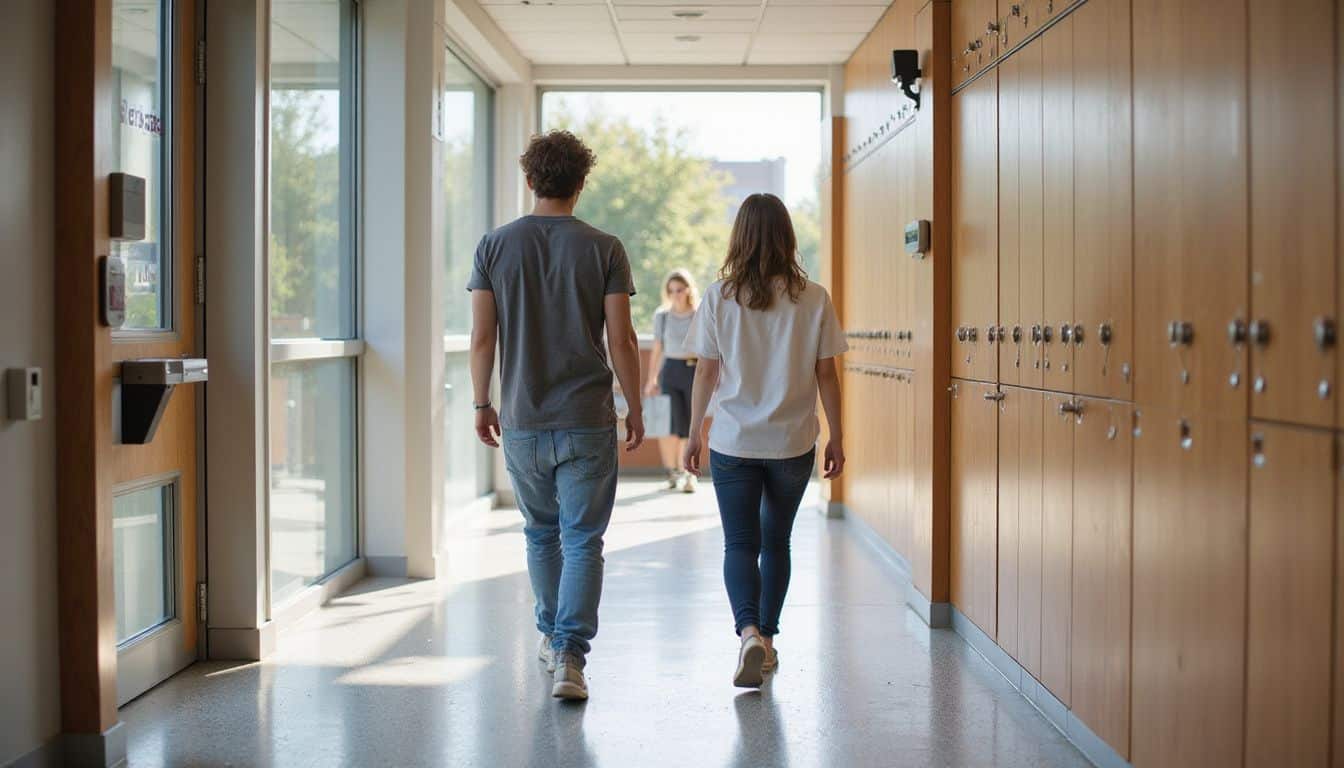
By 2025, school safety will see major changes. Schools will replace old-style security measures with digital tools to protect buildings and online spaces at the same time. Advanced technology will shield schools from physical dangers and cyber threats—both common issues in recent years.
Schools will blend tough doors and security cameras with online protections, making student data safer. This blended approach is important, as online risks continue to rise right alongside physical dangers.
Students wanting to become smarter in school will pick up basic cybersecurity skills as part of their normal lessons.
Quick action will also become standard practice, thanks to new reporting apps. Students will be able to raise safety concerns easily and privately, helping staff deal swiftly with problems before they worsen.
Mental health support will grow too—more counselors and targeted programs will identify kids needing help early on. Many safety incidents begin with mental health needs left unmet, so improving services makes sense.
Smart tools will soon spot unusual activity and notify staff immediately—without making students feel watched or restricted. Rather than feeling locked down, students will enjoy safer, friendlier environments where they feel comfortable and secure.
People Also Ask
What are the most effective emergency notification systems for schools?
Great notification systems instantly alert everyone through phones, speakers, and school computers—all at the same time. They must work even during power outages. Many campuses now use special apps, allowing teachers and staff to quickly send out alerts and share locations during an emergency.
How can schools address mental health issues to prevent violence?
Schools should bring in more counselors and mental health professionals to help students cope. Programs like Sandy Hook Promise teach kids and staff how to recognize early warning signs in peers who are struggling. Children who receive mental health care through Medicaid or the Children’s Health Insurance Program tend to have better emotional control and a lower chance of self-harm or violence.
What security measures help prevent school shootings?
A strong system for detecting intruders and strictly controlled entryways keep unwanted people out of the building. Regular safety assessments identify weak points and areas needing attention. Schools like those in Uvalde, Texas, took steps to strengthen security after tragedies such as the attack at Robb Elementary School.
How can schools reduce bullying and physical violence?
Mentorship and peer buddy programs help students build friendships, confidence, and a sense of worth. Feeling respected leads to less anger and resentment towards others. Afterschool clubs and activities also offer healthy, safe spaces—preventing students from drifting into trouble after class.
What training should school staff receive for emergencies?
Every staff member should get trained in first-aid basics and crisis response methods. They need to spot mental health warning signs early. Regular emergency drills teach everyone exactly what steps to follow—without spreading panic or confusion.
How can schools balance security with student privacy?
Schools should secure private student data carefully while setting up safety measures. Section 504 protection under the Rehabilitation Act ensures special education students are treated fairly. Guidelines from the Elementary and Secondary Education Act also help schools respect student privacy as they maintain safety standards.
References
https://www.rhombus.com/blog/school-security-cameras-video-surveillance-systems-pros-and-cons/
https://www.lenels2.com/en/news/insights/school-safety-tips.html
https://resources.impactfireservices.com/school-safety
https://navigate360.com/blog/safety-drills-in-schools-enhancing-student-safety/
https://pmc.ncbi.nlm.nih.gov/articles/PMC6072059/
https://ibw.westell.com/case-study-k-12-school-safety/
https://callmc.com/how-working-together-can-make-our-schools-safer/
https://pmc.ncbi.nlm.nih.gov/articles/PMC5363950/
https://nearpod.com/blog/student-teacher-relationships/
https://www.panoramaed.com/blog/why-teacher-student-relationships-matter
https://blog.fentress.com/blog/how-to-encourage-students-to-report-school-safety-threats
https://www.campussafetymagazine.com/news/5-ways-schools-can-encourage-students-to-report-threats/123951/ (2024-09-19)
https://www.rand.org/research/gun-policy/analysis/essays/school-resource-officers.html (2024-11-25)
https://www.nassp.org/2018/06/27/7-strategies-to-enhance-school-safety/ (2018-06-27)
https://www.ed.gov/sites/ed/files/admins/lead/safety/threatassessmentguide.pdf
https://www.verkada.com/blog/improve-school-safety-surveillance-technology/ (2019-08-21)
https://sitesafetynet.org/parent-involvement-in-k-12-education-safety/
https://raptortech.com/resources/blog/fostering-school-safety-through-community-involvement-and-collaboration/ (2024-04-26)
https://www.stopitsolutions.com/blog/technology-solutions-for-enhancing-school-safety-in-2025
